Below are some of the details of my physical computing midterm project:
The specification for this project was to build a rough prototype of ANYTHING using an Arduino and 1 of each of the following: a serial input, a serial output, a digital input and a digital output. I chose to build a steampunk top hat sharing the wearers communication preference.
Introduction
Colour communication badges were developed by the autistic community for use at events specifically for them. They assist in socialisation by clearly showing the wearers level of willingness to socialise while also conveying boundaries. Over time the use of these badges has become increasingly widespread, to the point where they are being used at technology and fan events that aim to be more inclusive of disabled individuals, particularly autistic people. This project aims to design and build a prototype interactive wearable version of the colour communication badges that would be more suitable for costume-based environments in which a wearer may find themselves. This interactive steampunk hat allows the wearer to choose a green badge to indicate they are open to socialising, a yellow badge to advise they are only interested in talking to people they already know or a red badge to indicate they are not interested in socialising.
Concept
Neurodiversity is the term used to cover the range of differences in human brains regarded as part of normal variation in the human population [4]. Autism is a type of neurodivergence associated with differences in communication and sensory experience, though it can look different from person to person. Colour Communication Badges [5] are a valuable tool that facilitate social interaction for individuals with diverse disabilities and communication requirements. Introduced by Autism Network International in 1995 [13], these badges gained widespread recognition and acceptance within the autistic community, particularly in autistic spaces and conferences [1, 6, 7, 10–12].
The popularity of these badges has been expanding beyond autistic spaces to events such as board game and gaming conventions [9, 12], software developer events [14], cosplay and fan conferences [2, 3, 8]. Originally these badges were designed to be printed on paper and pinned to a person’s clothes in such a way as to allow them to be changed by the wearer throughout the day based on the person’s communicational energy levels. See Figure 1 below for an example of the 3 badge options as provided by the Autism Self Advocacy Network.

Figure 1: Example of communication preference cards as provided by Autism Self Advocacy Network (https://autisticadvocacy.org/wp-content/uploads/2014/02/ColorCommunicationBadges.pdf)
These badges use standard traffic light colours to communicate the wearers willingness and for socialisation while simultaneously clarifying their boundaries. Green indicates the wearer is open to socialising. Yellow indicates they are open to socialising but only with people they already know. Red indicates that the wearer does not want to socialise and may not respond if someone attempts to communicate directly with them.
Following on from the concepts advent some non paper designs have been produced. Figure 2 shows a low tech enamel pin variation on the concept of social communication badges. Figure 3 shows DigiBadge, a more technically advanced screen based prototype of these communication badges.
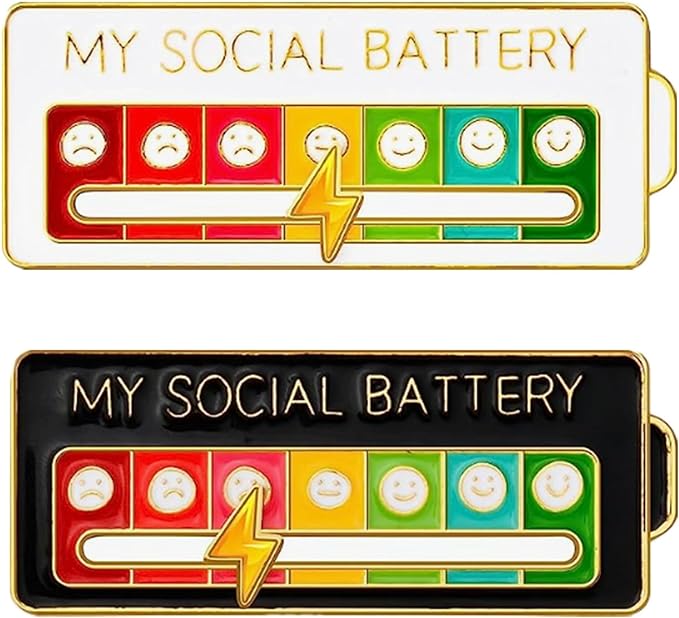
Figure 2: Social Battery enamel pin designed by Atelier Eumori (https://www.kickstarter.com/projects/ateliereumori/interactive-enamel-pins)
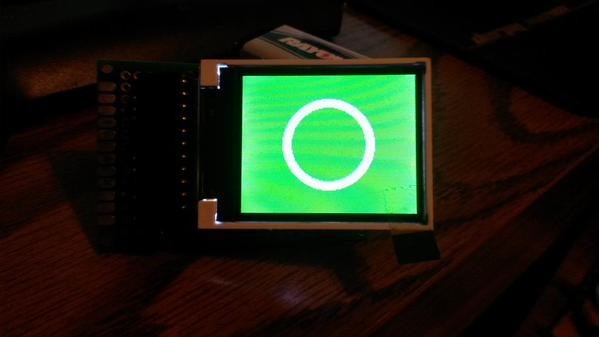
Figure 3: DigiBadge screen based version of colour communication badges (https://www.kickstarter.com/projects/matchfire/digibadge-a-digital-color-communications-badge)
| Potentiometer value | Servo motor position | Badge displayed |
|---|---|---|
| <= 341 | 0 degrees | Green |
| >341 && <= 682 | 90 degrees | Yellow |
| > 682 | 180 degrees | Red |
Table 1: Table of potentiometer values and how these align with the servo motor position, which directly relates to which colour badge is visible to those looking directly at the front of the hat.
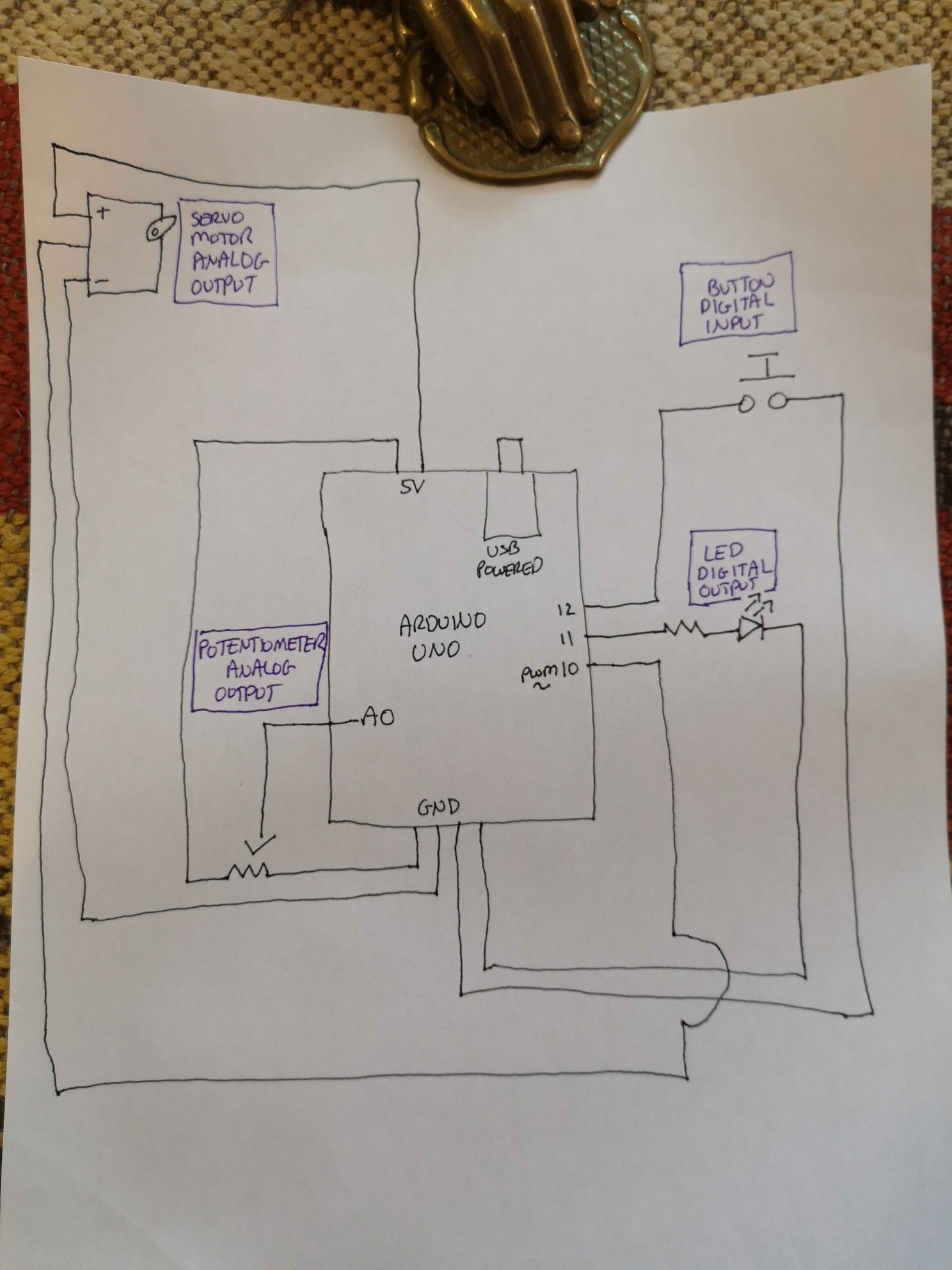
Figure 4: Circuit diagram of colour communication badges steampunk hat
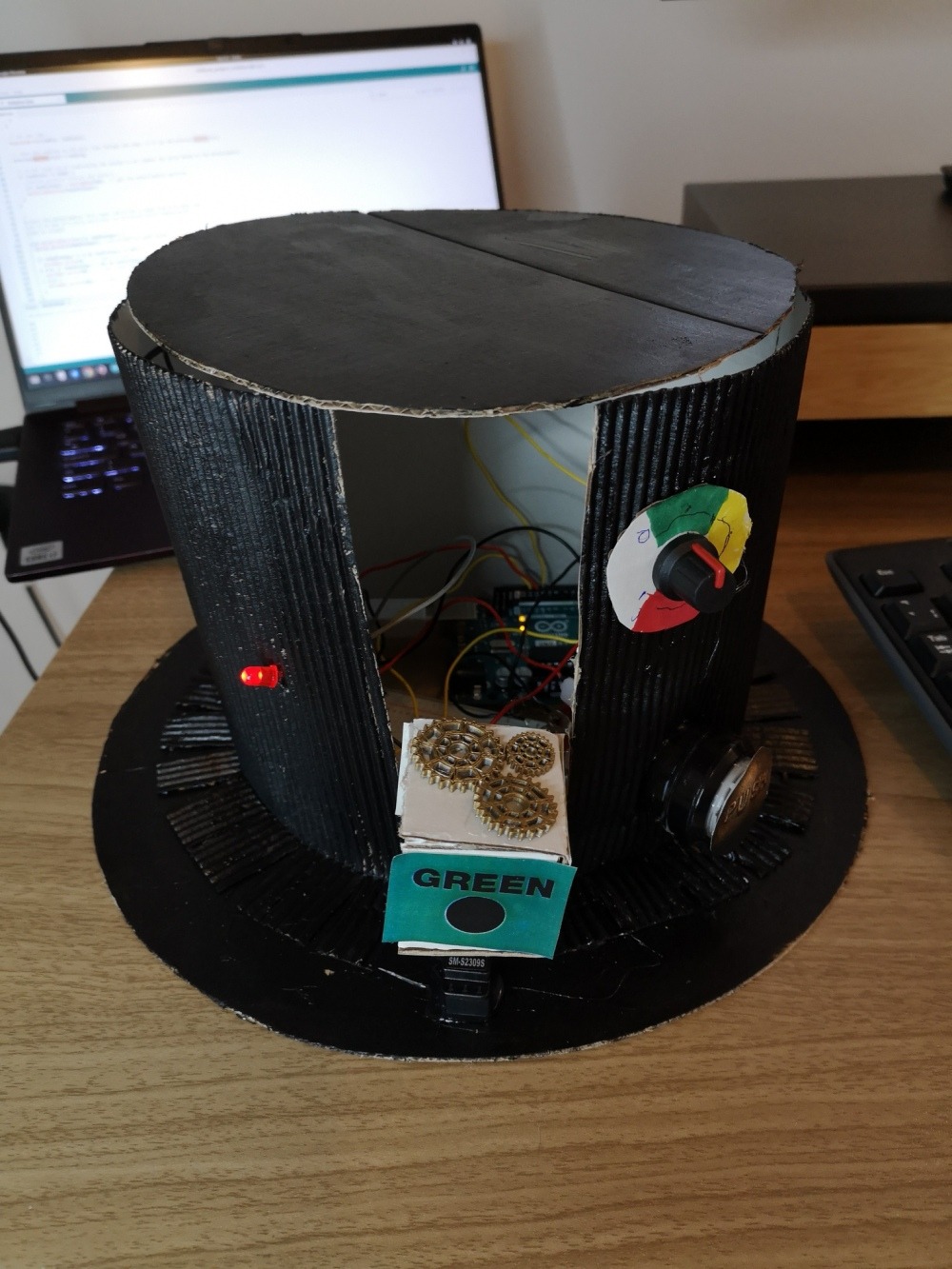
Figure 5: External view of interactive wearable Colour Communication Badge Top Hat
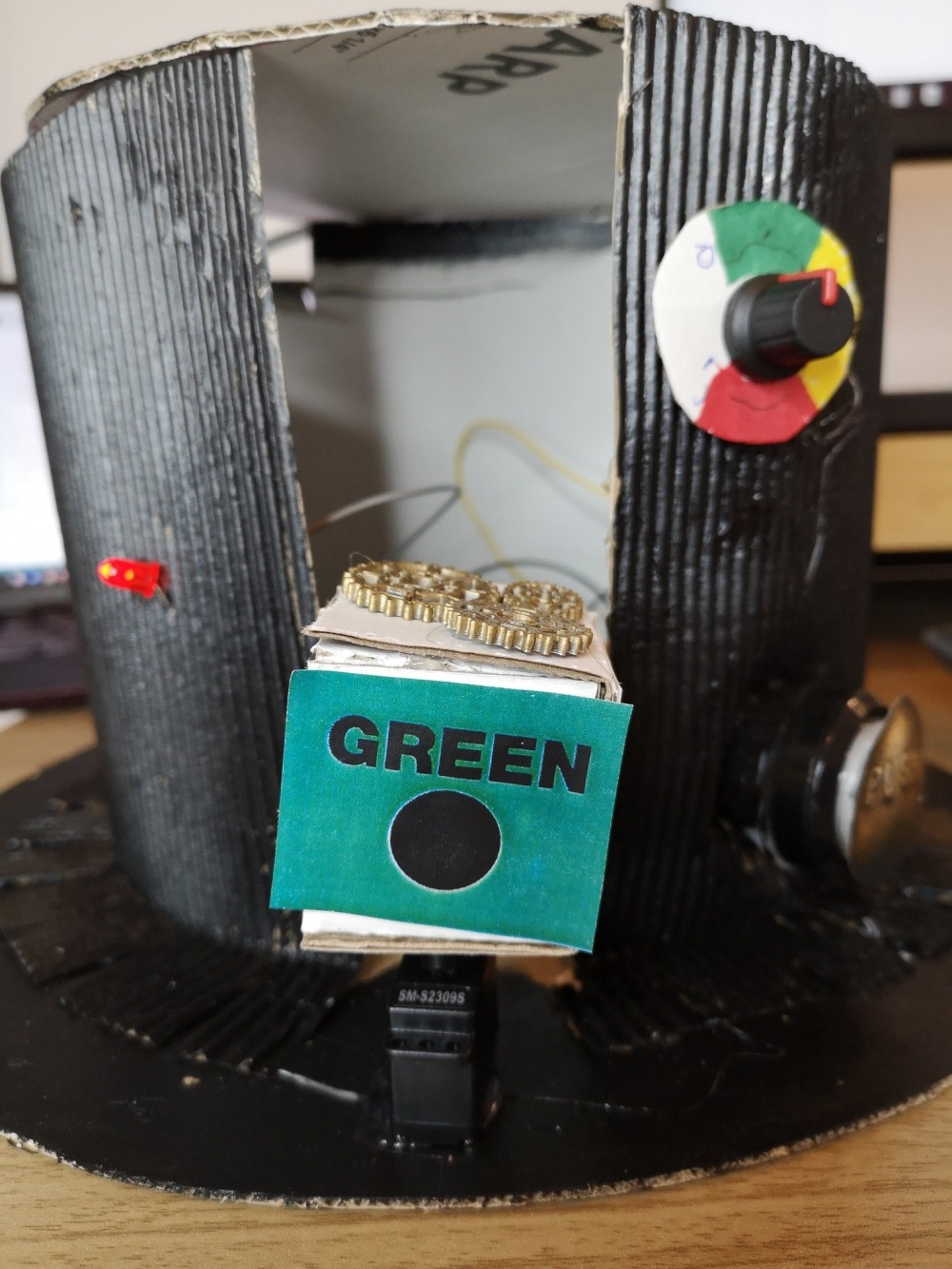
Figure 6: closeup view of interactive elements on interactive wearable colour communication badge Top Hat. From right to left, there is an LED, a servo motor, a potentiometer and a push button.
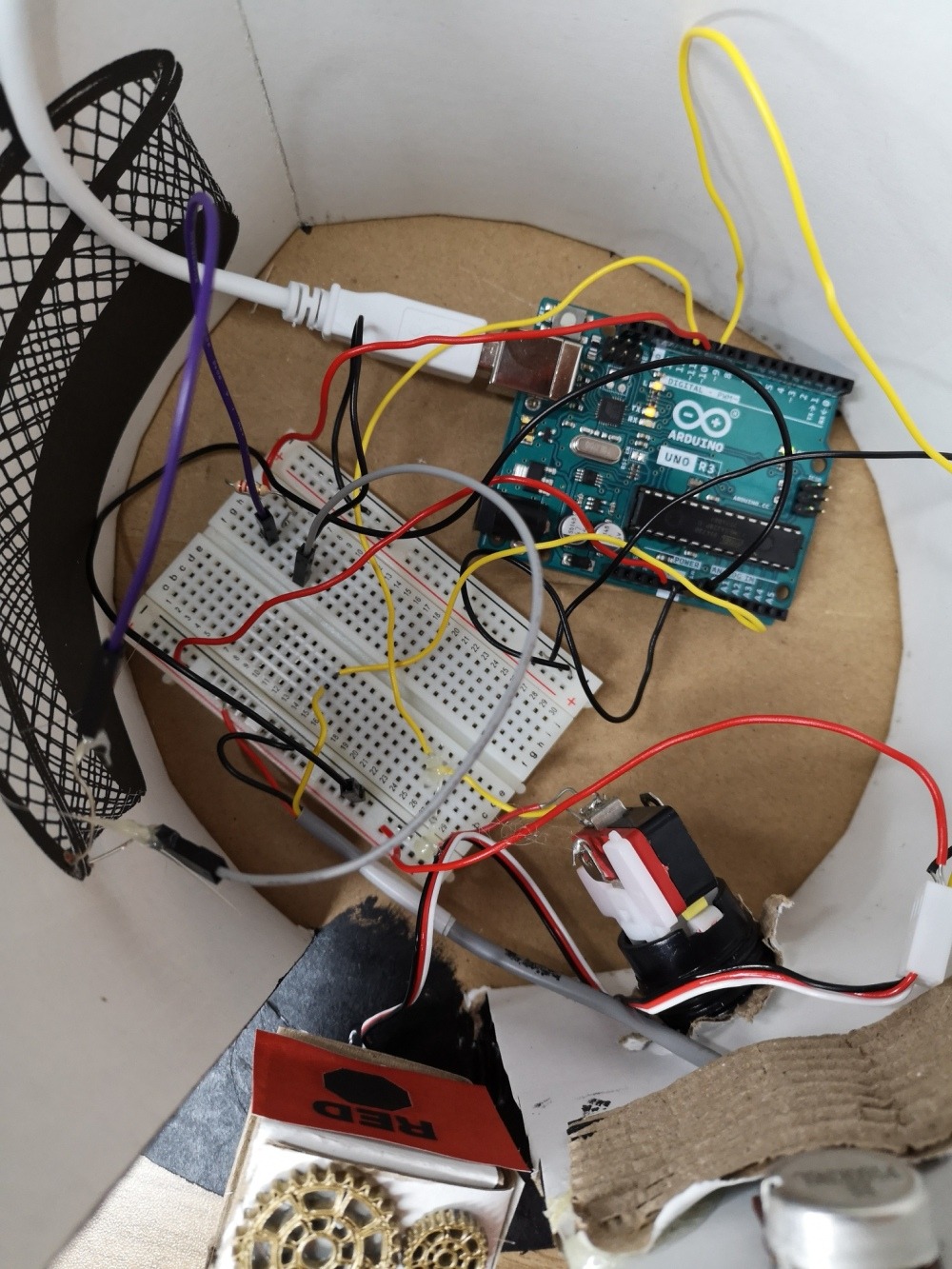
Figure 7: Internal view of interactive wearable Colour Communication Badge Top Hat, showing breadboard and Arduino uno.
Potential future improvements
As an early prototype, this design offers multiple opportunities for potential future improvement.
- The most obvious improvement would be swapping out USB power for an independent power source such as a 9V battery. This would free the wearer from having to be directly connected to a computer while operating the hat.
- Another clear-cut enhancement would be to swap out the breadboard for soldered connections. This would reduce the size of the electrical components considerably. There would then be room to move the servo motor further back into the hat so that only a single communication badge would be visible at any one time, which would reduce the risk of confusion for anyone viewing the badges. Soldering the connections would also improve the reliability of the device as currently, the unsoldered connectors tend to pop out of their connection points when the hat is moved around.
- The number and type of the interactive components used were mandated by the design brief, which required at least one of each digital input, digital output, analogue input and analogue output. This is completely understandable as the project is a learning exercise. There is however a question as to whether the usability of the prototype could be improved by removing some of the components e.g. the LED.
- The spinning range of the servo motor was limited to 180 degrees. For future implementations, I would be inclined to swap out the servo for one with a continuous range of 360 degrees.
Bibliography
[1] About Autreat: 2013. https://www.autreat.com/autreat.html#INTERACTION. Accessed: 2023-10-30.
[2] Accessibility Information | Nine Worlds: https://nineworlds.co.uk/content/accessibility-information.html. Accessed: 2023-10-30.
[3] Accessibility Services: https://www.furfest.org/attend/accessibility. Accessed: 2023-10-30.
[4] Armstrong, T. 2015. The Myth of the Normal Brain: Embracing Neurodiversity. AMA Journal of Ethics. 17, 4 (Apr. 2015), 348–352. DOI:https://doi.org/10.1001/journalofethics.2015.17.4.msoc1-1504.
[5] Autistic Self Advocacy Network Color Communication Badges. Autistic Self Advocacy Network.
[6] Belek, B. 2023. ‘A Smaller Mask’: Freedom and Authenticity in Autistic Space. Culture, Medicine, and Psychiatry. 47, 3 (Sep. 2023), 626–646. DOI:https://doi.org/10.1007/s11013-022-09794-1.
[7] Buckle, K.L. 2020. Autscape. Autistic Community and the Neurodiversity Movement: Stories from the Frontline. S.K. Kapp, ed. Springer. 109–122.
[8] Color Communication Cards • BronyCon 2017: http://2017.bronycon.org/about/policies/color-communication-cards. Accessed: 2023-10-30.
[9] Color Communications Badges – Mysterium: https://mysterium.net/2014/07/color-communications-badges/. Accessed: 2023-10-30.
[10] Fletcher-Watson, B. and May, S. 2018. Enhancing relaxed performance: evaluating the Autism Arts Festival. Research in Drama Education: The Journal of Applied Theatre and Performance. 23, 3 (Jul. 2018), 406–420. DOI:https://doi.org/10.1080/13569783.2018.1468243.
[11] Interaction Access: Opportunity but Not Pressure: https://stimpunks.org/access/interaction/. Accessed: 2023-10-30.
[12] Introducing Color Communication Badges | AlterConf: 2017. https://alterconf.com/news/introducing-color-communication-badges. Accessed: 2023-10-30.
[13] Steve Silberman 2015. NeuroTribes: The Legacy of Autism and How to Think Smarter About People Who Think Differently : Steve Silberman: Amazon.co.uk: Books. Allen & Unwin.
[14] 2023. How We Use Interaction Badges – WordCamp US 2023.